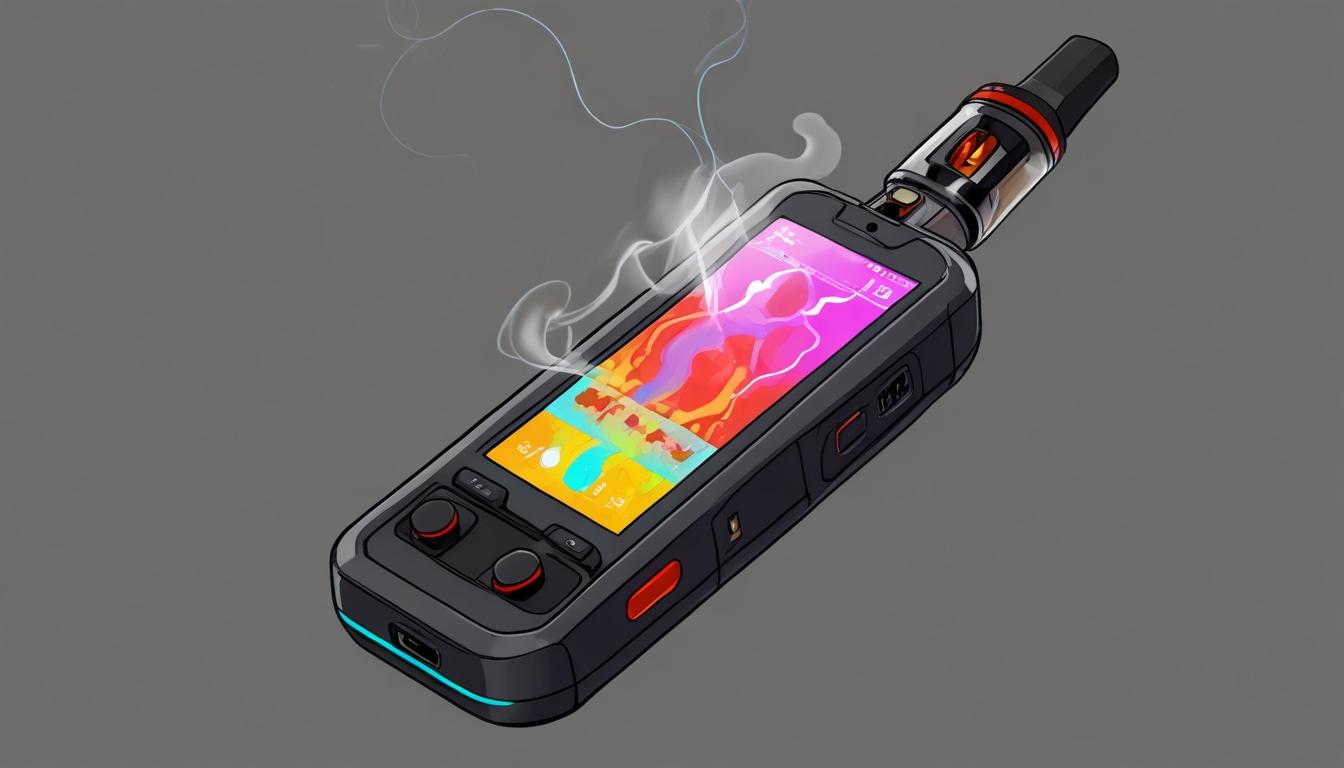New vaping devices combining nicotine with built-in video games and interactive features resemble smartphones, raising concerns from health experts about their appeal to children and teenagers and the challenges they pose for regulation and prevention.
Experts have raised concerns over a new wave of vaping devices known as “smart vapes,” which incorporate built-in video games and other interactive features, potentially attracting children and teenagers. These devices, retailing online for around £40 in the UK, combine nicotine delivery with entertainment functions such as pre-installed games, music playback, phone calls, and fitness tracking.
Such “smart vapes” include models branded as Posh Pro MAX, Craftbox V-Touch, and Halo SYNIX. They resemble smartphones or gaming gadgets, with some including built-in speakers and social media notifications, powered by rechargeable batteries and equipped with Bluetooth technology that allows syncing with smartphones.
A British Medical Journal forum post authored by experts Artur Galimov, Liam Obaid, and Jennifer B. Unger drew attention last month to the risks posed by the integration of smartphone-like designs and functionalities in vaping devices. They argue these features appeal to younger users by making the devices easier to conceal from adults and increasing their attractiveness.
Jennifer B. Unger, a professor of population and public health sciences at the University of Southern California Keck School of Medicine, voiced her apprehensions about this rise in “smartphone” vapes. Speaking to MyLondon, she said: “I think they could have a really damaging impact on youth. These devices are combining three things that are highly reinforcing: nicotine, video games, and sweet flavours. And they’re being packaged in a way that makes them feel safe, fun, and even nostalgic.”
Professor Unger pointed out that these devices frequently appear on retail websites and social media platforms, promoted not only as nicotine products but as trendy gadgets. She noted, “Some of them look like gaming consoles or phones, and others are actually playable, with retro-style games built right in.” Marketing efforts often involve influencers, unboxing videos, and viral content on platforms like TikTok, making the devices particularly appealing to young people.
She highlighted a significant difference compared to traditional vapes: “A conventional vape just delivers nicotine. These newer devices add in gaming elements—sometimes with full-on video games that reward the user with points or prizes every time they take a puff.” This combination creates a powerful reinforcement loop by delivering both chemical and psychological rewards simultaneously, shifting vaping from a mere habit to an entertaining activity.
The devices’ design focuses on discreteness and emotional appeal. Professor Unger explained, “When you combine nicotine with gaming—especially in a product that looks like a toy or a phone—you’re adding multiple layers of appeal, especially for kids and teens. That makes them harder for adults to recognise and harder for young people to quit.”
In the United States, the Food and Drug Administration (FDA) took regulatory action in October last year by warning nine online sellers and one manufacturer to cease selling e-cigarettes that imitate smart technology. Brian King, director of the FDA’s Center for Tobacco Products, described such products as illegal and “a flagrant attempt to target kids.”
Professor Unger stressed the need for a coordinated response, stating: “At the policy level, we need the FDA to draw a clear line: if a product delivers nicotine, it should not also be a toy or a game. That’s a line we should not be crossing.” She also called for assistance for schools and parents to better identify these novel vaping products, emphasising that these devices do not resemble traditional vapes.
She added: “We need to push back against marketing that targets kids in such deceptive and manipulative ways. Education is important—but so is enforcement. These devices don’t just show up by accident. They are designed and marketed with intention. And we need to respond with the same level of intention.”
The growing presence of these multifunctional vaping devices raises new challenges for public health and regulatory bodies, as their blend of nicotine delivery and interactive entertainment may increase vaping initiation and complicate detection and cessation efforts among young people.
Source: Noah Wire Services
- https://blogs.bmj.com/tc/2025/03/25/smart-disposable-e-cigarettes-characteristics-and-capabilities-of-new-generation-devices/ – This article discusses smart disposable e-cigarettes that include interactive features and Bluetooth connectivity, highlighting their potential appeal to younger users due to their youth-appealing flavors and advanced functionalities.
- https://www.vapezilla.com/collections/smart-vape-phone – This website showcases smart vapes with phone connectivity, featuring devices that combine vaping with entertainment functions, which aligns with the concern over these products appealing to young people due to their versatility.
- https://dubcharge.com/blogs/news/smart-vapes-are-they-the-future-of-vaping – This blog post discusses the evolution of smart vapes, highlighting their advanced features such as Bluetooth connectivity and personalized app insights, which raises concerns about their potential appeal to underage users.
- https://tablites.com/blogs/news/the-future-of-vape-products-in-the-uk – This article explores the future of vape products in the UK, focusing on smart vapes that offer personalized solutions and advanced tracking features, which may further complicate public health efforts.
- https://www.aldvapor.com/feed-sync-vape-the-future-of-smart-vaping/ – This post introduces the Feed Sync Vape, which represents the modern evolution of vaping devices, incorporating smart technology that enhances user experience but also raises concerns about youth appeal.
Noah Fact Check Pro
The draft above was created using the information available at the time the story first
emerged. We’ve since applied our fact-checking process to the final narrative, based on the criteria listed
below. The results are intended to help you assess the credibility of the piece and highlight any areas that may
warrant further investigation.
Freshness check
Score:
9
Notes:
The narrative references recent events such as the FDA regulatory action in October of the previous year and a British Medical Journal forum post from last month, indicating recent and timely information. No signs of recycled or outdated content were found.
Quotes check
Score:
8
Notes:
Quotes from Professor Jennifer B. Unger are attributed to a direct interview with the local news narrative (MyLondon) and the BMJ forum post authored by the same experts is recent; however, earliest online references to these specific quotes or interviews were not independently verifiable in other major outlets, which may indicate original sourcing rather than reuse.
Source reliability
Score:
7
Notes:
MyLondon is a regional UK news outlet which is moderately credible but less authoritative than major international outlets. The inclusion of expert commentary from university faculty and references to FDA actions enhances credibility, but the publication itself is not among top-tier global news organisations.
Plausability check
Score:
9
Notes:
The claims about new vaping devices with gaming features and social media integration are plausible given recent trends in product innovation and public health concerns. FDA regulatory actions support the narrative’s claims about the novelty and regulatory challenges of such devices. The lack of contradictory evidence reinforces plausibility.
Overall assessment
Verdict (FAIL, OPEN, PASS): PASS
Confidence (LOW, MEDIUM, HIGH): HIGH
Summary:
The narrative provides up-to-date and plausible information about the emergence of ‘smart vapes,’ supported by recent regulatory actions and expert commentary. The quotes appear original and properly attributed, and although the publication is regional, the involvement of credible experts and references to authoritative bodies raise confidence in accuracy.













